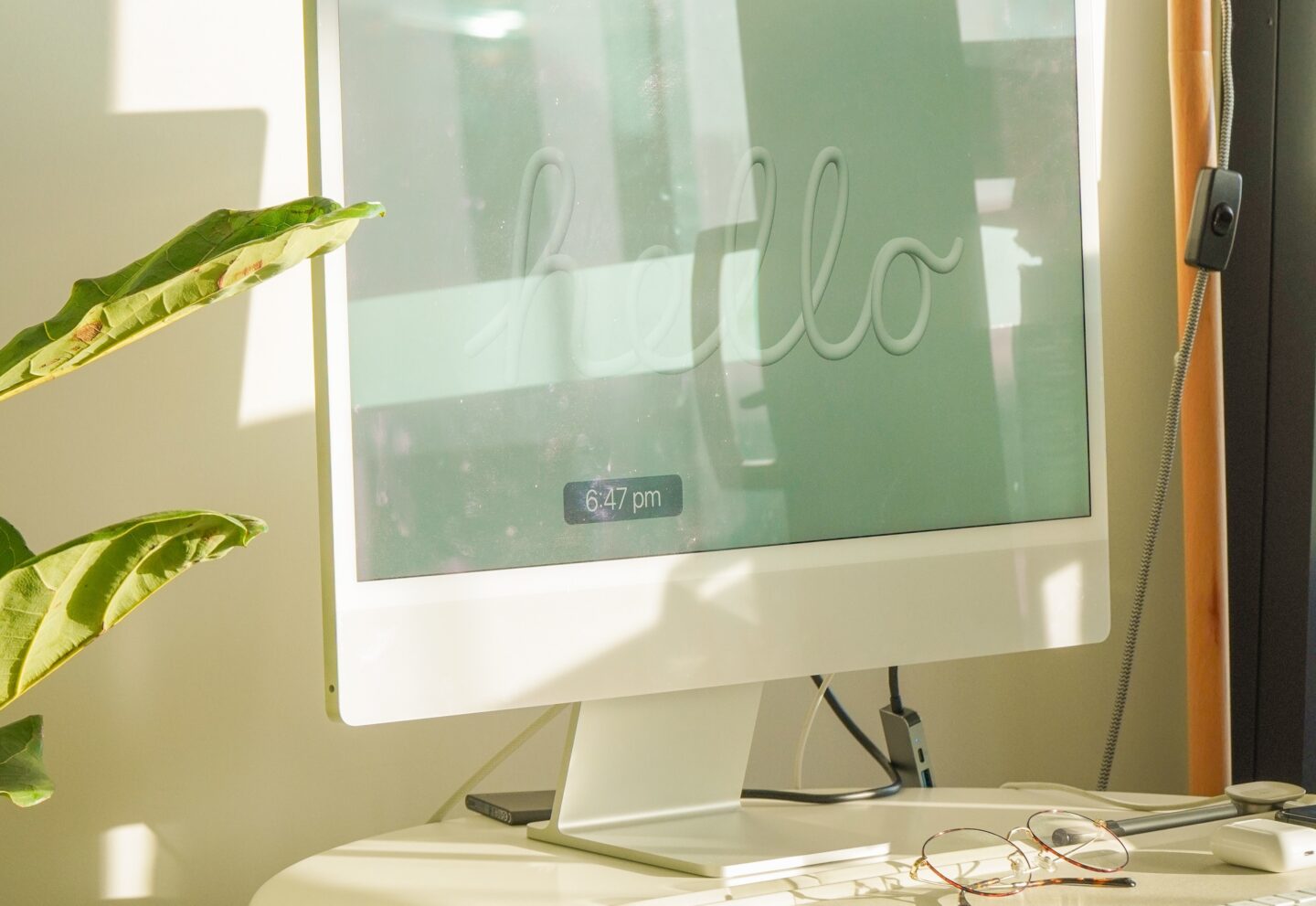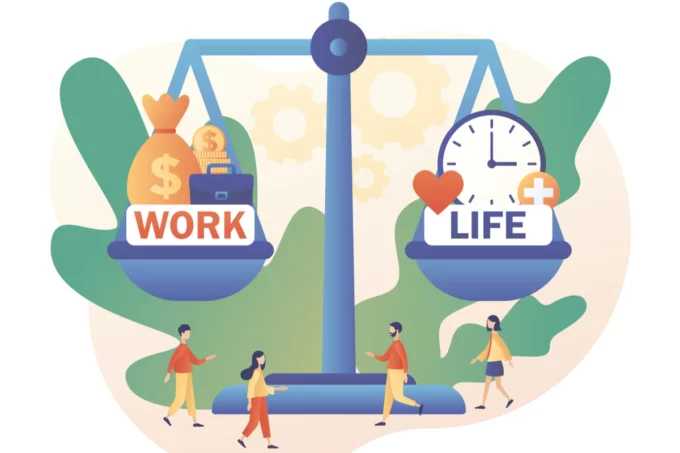
Stress busters: How to help employees help themselves
Dr. Rachel Lewis explores how empowering teams to co-create solutions can reduce workplace stress and boost wellbeing...

by Katia Vlachos Published September 15, 2023 in Human Resources • 7 min read
You’ve just come back from a lovely vacation to a full inbox and a long to-do list. As you transition from a relaxed mindset to work mode, it’s essential to ensure that you function at your personal best. Yet with constant demands for your attention, those good intentions made while your out-of-office message was on can quickly get derailed. To ensure you find time to tune into your inner self, it can be helpful to establish a routine to regularly assess your cognitive and emotional state – particularly as you navigate the challenges of returning to work after a longer break.
This process of self-reflection across three principal dimensions – energy, emotions, and presence – is a powerful mechanism to enhance our daily productivity, improve our interpersonal relationships, and bolster our well-being. By regularly tuning into these three key aspects of our existence, we can better understand our reactions and responses to external stimuli and ensure a smooth transition between our work environments and routines.
Our energy levels often go overlooked until they reach extremes, like absolute exhaustion or overdrive. Yet maintaining a moment-to-moment consciousness of this dimension is vital and can come in handy as we manage the sense of overwhelm or urgency that often accompanies a return to work after a longer break. Energy is the fuel that powers our cognitive and emotional engines.
To quantify your energy level, adopt a -5 to +5 scale:

After ranking your energy level, delve into the ‘why’ through a set of introspective questions:
Understanding the ‘why’ behind your energy state is essential to manage it effectively. To do this, it’s crucial to identify what energizes you – activities, people, situations – and those that de-energize you and drain your energy. Aim to do more of what uplifts you and less of what pulls you down. Allow yourself some time to readjust to your pre-vacation energy levels.
Regular exercise such as walking, cycling, or swimming can boost energy levels by enhancing circulation and oxygen supply to your cells.
Balanced meals rich in whole grains and high-protein foods provide a steady release of energy. Avoid high-sugar foods that can lead to energy crashes.
Dehydration can cause fatigue. Ensure you’re consuming adequate water throughout the day.
Quality sleep replenishes energy reserves. Establish a relaxing pre-sleep routine and consider power naps during the day to restore energy. Again, you may need to allow your body some time to adapt to your regular, pre-vacation sleep schedule.
A positive outlook can boost your energy. Techniques such as cognitive-behavioral therapy or mindfulness can help shift negative or stressful thoughts that might be draining your energy.
Unravelling our emotional state forms an integral part of self-awareness. Emotions act as our internal compass, providing valuable feedback about our experiences, including those related to getting back to work.
To assess your emotional state, employ a -5 to +5 scale:
After identifying your emotion, explore the “why” with these questions:
Understanding what triggers strong emotional responses and recognizing your reaction patterns is key to emotional self-regulation. Explore what happens when you’re emotionally triggered and consider alternative reactions.
Regular practice helps you observe your emotions without reacting, allowing them to naturally dissipate.
Deep, controlled breathing can reduce emotional intensity by activating the body’s relaxation response.
Cognitive restructuring (changing how you think about a situation) and distraction (diverting your attention to something neutral or positive) can help manage emotions.
Share your feelings with supportive friends, family, or a mental health professional. Verbalizing your emotions often provides relief.
Engaging in activities you enjoy can help to release feel-good hormones and calm intense emotions.
Presence is about being fully engaged in the moment and not being distracted by past ruminations or future anxieties – including when it comes to our work tasks.
To assess your presence, use a -5 to +5 scale:
Subsequently, reflect on the “why” behind your presence level:
Understanding what distracts you most, such as dwelling on past events or worrying about future uncertainties, is vital in cultivating presence. Recognize your most common distractions and work to reduce their influence so you can remain focused and productive.
Exercises like focused breathing or body scans train your brain to stay in the present moment.
Concentrating on one task at a time can enhance your level of presence and reduce stress.
Scheduled periods away from screens can lower distraction levels and increase presence.
Time spent in natural environments can increase feelings of connection and presence.
Periodic self-check-ins allow you to reassess your level of presence and redirect your focus to the present moment when you get distracted.
Understanding the triad of energy, emotions, and presence provides you with the critical data required to manage yourself and enhance your well-being, especially as you transition from vacation back to work. Here is a three-step self-awareness training practice you can start right away, upon your return:
By checking in with yourself – recognizing where you are, understanding why, and taking steps to regulate your state – you are effectively building resilience and fostering greater emotional intelligence.
Developing this self-awareness and self-management capability across the three crucial dimensions of energy, emotion, and presence, enables you to better manage your resources and reactions and empowers you to lead a more productive, contented life. An ongoing practice of regular check-ins, reflective journaling, and implementing tailored strategies not only benefits you but can also lead to more positive interactions with others, resulting in a more harmonious, productive environment – both personal and professional.
This process is about growth, not perfection. It’s a continuous practice of tuning into your inner self to better understand your needs and reactions, learn from them, and choose how to respond. Let’s make this your best back-to-work experience ever.

Coach and author
Dr Katia Vlachos is a certified coach and author of A Great Move: Surviving and Thriving in Your Expat Assignment. She supports the globally mobile as they navigate international moves, career changes, reinvention, and identity issues to design a thriving life abroad. A researcher and policy analyst by training, she has a Master’s from the Harvard Kennedy School and a PhD from the RAND Corporation. She has written for Harvard Business Review and Huffington Post, and been featured in the Financial Times and the New York Times.

June 23, 2025 • by Rachel Lewis in Human Resources
Dr. Rachel Lewis explores how empowering teams to co-create solutions can reduce workplace stress and boost wellbeing...

May 13, 2025 • by Luca Condosta in Human Resources
The CDO, formerly a figurehead for regulatory compliance, is now a key driver of company strategy. Luca Condosta describes the essential skills that CDOs require to turn DE&I concepts into actual commercial...

April 30, 2025 • by Manju Ahuja in Human Resources
The pandemic sparked a shift to remote work that’s proving hard to reverse. According to Prof. Manju Ahuja, hybrid models are the new norm—driven by employee expectations, technological advances, and a changing...

April 29, 2025 • by Michael D. Watkins in Human Resources
Use this diagnostic tool and roadmap to rebuild trust and confidence within dysfunctional teams – the first crucial steps toward a future of high performance....
 Audio available
Audio availableExplore first person business intelligence from top minds curated for a global executive audience